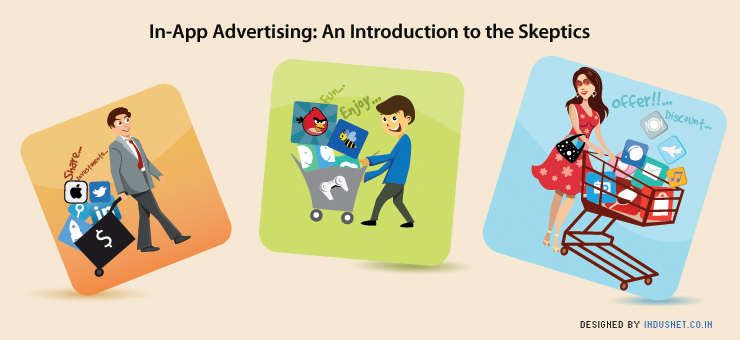
Though most business owners would prefer to overlook, an important development in advertising is the entrance of mobile application-based advertising. With an increased number of people using Apple’s iPhones, Android based devices and Windows 8 based devices, the future is certainly going to be app fuelled. In fact, most people today use applications to access their favorite content, rather than using a browser to visit that very same page.
In-app Advertising
In-app advertising refers to the practice of placing advertisements within the context of a mobile application. Such an application can target very specific audience and the returns can be astounding. Most consumers who use a particular app will have certain well defined interests. Choosing and zeroing down on your target audience is extremely easy when it comes to in-app advertisements. What is not easy is, deciding on the manner these in-app advertisements appear within an application.
Usually, ad designers have resorted to banner and text ads that intrude on the screen when a user is engaging with an application. The user tries to avoid the ad as much as possible and may end up getting annoyed with the whole experience. This can only lead to the ad being ineffective and a waste of corporate marketing funds. With such a situation in hand, it becomes important to consider the pros and cons of different in-app styles including text, banner, video and images. The general consensus among industry leaders is that an app must be as little intrusive as possible and must be visually very appealing. In fact, an ad that is more visually engaging and appealing than the app itself will have higher click-through rates and eventual ad campaign success.
Pitfalls of Avoiding In-App Advertising
Thus, advertisements on web pages are hardly noticed and users continue to engage with content on applications. Ad revenue decreases and effectiveness of ad campaigns is negated. Business owners must bear in mind that applications are the present and the future, and that there is no looking away from mobile application advertising. Moreover, web is more frequently accessed via mobile phones and tablets than through traditional desktops and laptops. This leads us to a situation where monetizing through ad campaigns can happen only when applications within a mobile platform are understood.
Creating In-app Advertisements
While it can’t be argued if or not mobile app advertisements are required, it can be argued how these advertisements should appear within the applications. Most companies at the moment resort to text-based or banner advertisements which interfere with a user’s engagement. These unsightly banner ads tend to be intrusive and do not match the expectations of a user who is used to glamorous apps that employ HTML 5 or other languages which are very visual in nature. The onus is on creative guys in ad agencies who must make sure that the ads they create suit the aesthetics of the applications within which they appear.
HTML 5 based applications that ensure visual aesthetics can lead to better ad engagement. Moreover, users have noted that when an ad appears out of place within an app, they tend to avoid it or even stop using that application altogether. The key is to increase a user’s engagement when it comes to mobile app ads. The ads should be engaging as the apps they are found in and will have to utilize graphic rich HTML5 content or even full-fledged videos, which are shot stylishly. In-app advertisements will soon grow to be a multi-billion dollar industry and there is no way a company can escape this juggernaut.
Planning In-app Advertisements
Speaking to ad professionals, app designers and graphic designers becomes crucial at this stage. It becomes more crucial to define your target audience and what you are trying to aim at, when it comes to in-app advertisements. By listing down your priorities and defining your goals and target audience, you will be able to identify applications that are best suited to your marketing goals and target audience. Once applications are shortlisted, you could go ahead and design amazing in-app advertisements that match the design of an application. You do not require being a marketing ninja to understand that the specificity that an application provides is remarkable. By utilizing this platform effectively, you can increase your marketing potential by a large segment.